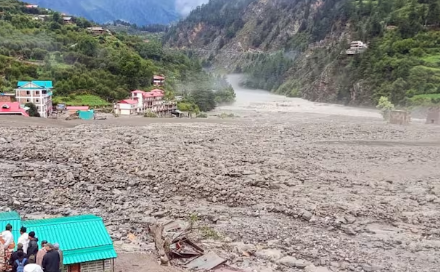On August 5, 2025, the tranquil Himalayan village of Dharali in Uttarkashi was suddenly devastated by a flash flood, triggered by what was initially identified as a cloudburst. In just minutes, torrents of water, mud, and debris swept through the settlement, destroying hotels, homes, and even the local market, leaving at least five dead and up to 100 people missing.

While early reports implicated a cloudburst, recent expert investigations suggest alternative causes. Satellite data and geologists point to a possible glacial lake outburst or glacier collapse—a stark reminder of escalating glacial hazards in the Himalayas. The disaster’s catastrophic impact was amplified by human activities—construction on fragile river floodplains and encroachment into sensitive zones worsened the damage.
These events unfold against a backdrop of environmental degradation. Plans to fell over 6,000 deodar trees in the Bhagirathi Eco-Sensitive Zone for road widening projects have drawn widespread criticism. Activists warn that deforestation, unplanned construction, and terrain disturbance have heightened Uttarakhand’s vulnerability to such disasters.
Rescue operations, hampered by landslides, poor connectivity, and ongoing downpours, have involved the Indian Army, NDRF, SDRF, and local volunteers. Over 130 individuals—including stranded tourists and seasonal agricultural workers—have been evacuated so far.
As monsoon crashes yearly into this fragile landscape, Dharali’s tragedy is both a warning and a call to action—a critical juncture demanding sustainable development, ecological respect, and robust disaster preparedness strategies.